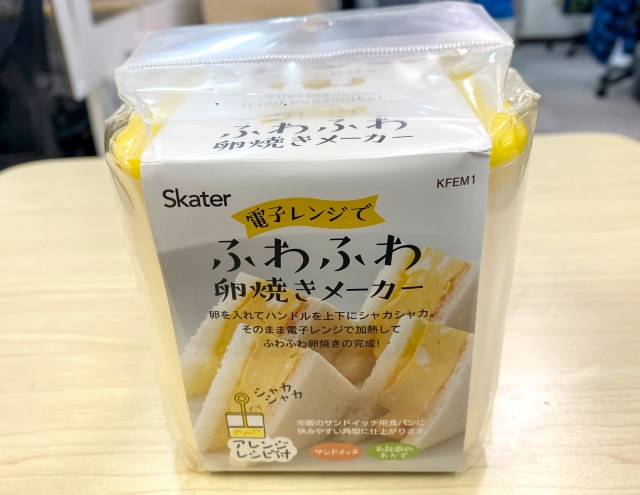
The key ingredient for the ultimate Japanese egg sandwich.
Japan may be well known for its traditional cuisine, but fusion cuisine here is just as exciting, and one particular fusion food that’s captured our hearts is the humble “Kissaten Tamago Sando“, or in English: “Coffee Shop Egg Sandwich“.
Kissaten are retro coffee shops that serve up not just tea and coffee but desserts and light meals as well. The kissaten egg sandwich is a coffee shop mainstay that conjures up an air of nostalgia for the Showa era (1926–1989), the heyday for kissaten, and what makes them unique is the fact that they contain thick, fluffy omelettes.
In Japan, omelettes are a thing unto themselves, cooked in rectangular frypans and gradually rolled over in layers to create thickness while retaining a light, moist and fluffy texture. It takes a bit of skill to learn how to make them properly, with chopsticks involved in the rolling, and while they taste great, they require quite a bit of time and patience to make.
So what do you do when you’ve got a craving for a thick-omelette Coffee Shop Egg Sandwich but are too lazy to make one? If you’re like us, you turn to the Fluffy Japanese Omelette Maker, which we’ll be trying out today.
This gadget promises to take all the hard work out of omelette making, and does away with the need for a pan as it’s designed to be used in the microwave.
Keen to test its effectiveness, we gathered together the following ingredients: eggs, white bread, mayonnaise, milk, and salt.
The first step is to crack the eggs into the container and add two teaspoons of milk, five grams of mayonnaise and a small pinch of salt. Then you pop the yellow plate into the container, cover it with the lid and…push the plate handle up and down.
A bit of force is required to raise and lower the plate with one hand, and the lid will come off if you don’t hold it down with the other hand, so it takes a little bit of getting used to. According to the instructions, the ingredients come together after a minute of plate-pumping, and then it’s time to cook it all in the microwave.
We removed the yellow pumping plate and popped the lidded container into the microwave, cooking the mixture for one minute on 500 watts. The next step is to take the lid off, stir the mixture about 10 times, and then it’s back into the microwave for 30-40 seconds at 500 watts.
Microwaves vary, however, and after 40 seconds, our egg was still runny so we heated it again until it was solid.
Taking it out of the container, we were surprised to find that it did actually look like a thick omelette!
We placed it in between two slices of bread and cut the sandwich in half diagonally to get that coffeehouse egg sandwich look. It had the distinct flavour we were hoping for, but unfortunately our creation left a lot to be desired in terms of looks, so we decided to have another go at making our dream sandwich.
This time we were aiming for a uniform thickness and a result that looked more like the egg sandwich on the packaging. We had a hunch our mistake lay in the cooking, so we decided to raise the temperature of the microwave to get a more even surface on the omelette.
The higher temperature worked a treat, because when we removed the omelette, it was much more uniform, both in colour and shape.
And when we used the omelette to make our egg sandwich, it looked much more like the ones served up at a kissaten.
And what about the taste? It was, in a word, delicious! It had a wonderful creaminess to it and a light, airy texture that satisfied all our egg sandwich cravings.
Now that 2020 has us spending a lot more time at home than usual, we’re determined to keep pumping this Fluffy Japanese Omelette Maker until we perfect the art of kissaten egg sandwich making.
Priced at 660 yen (US$6.20) plus tax, it’s a small investment that saves a lot of time and effort, and it now has a place at home in our kitchen with our other newly acquired gadgets for making gyoza and homemade chips.
Images ©SoraNews24
● Want to hear about SoraNews24’s latest articles as soon as they’re published? Follow us on Facebook and Twitter!
[ Read in Japanese ]

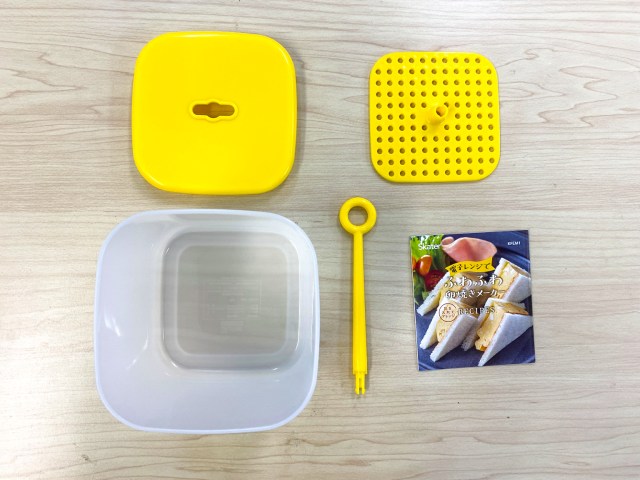
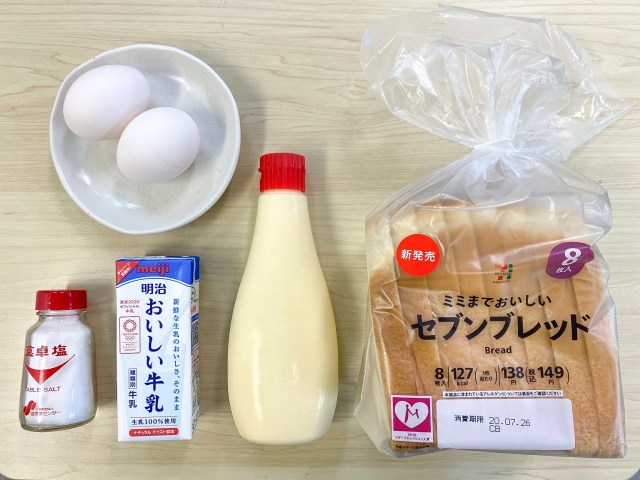
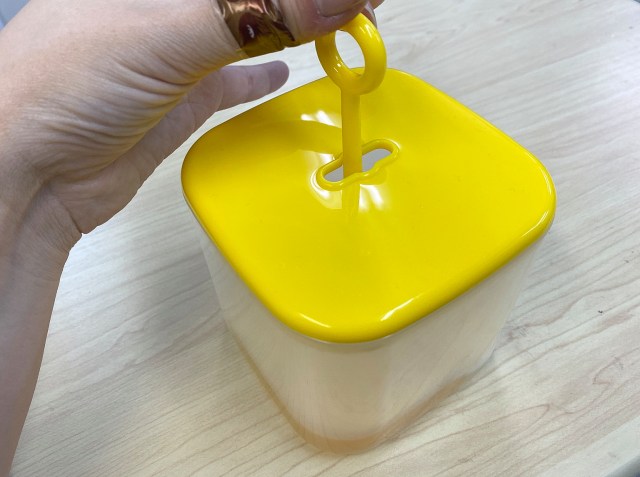
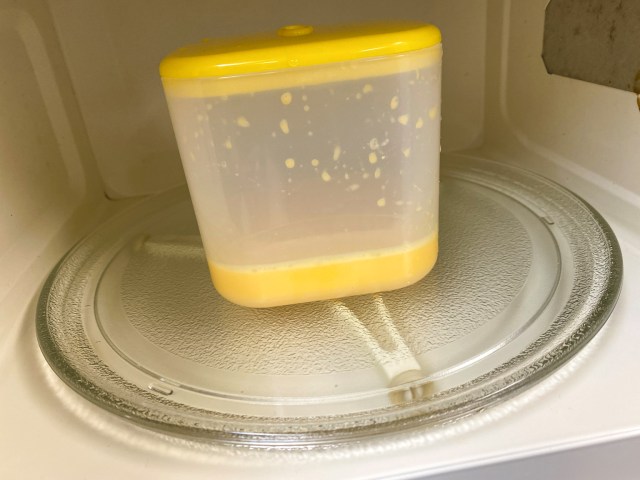
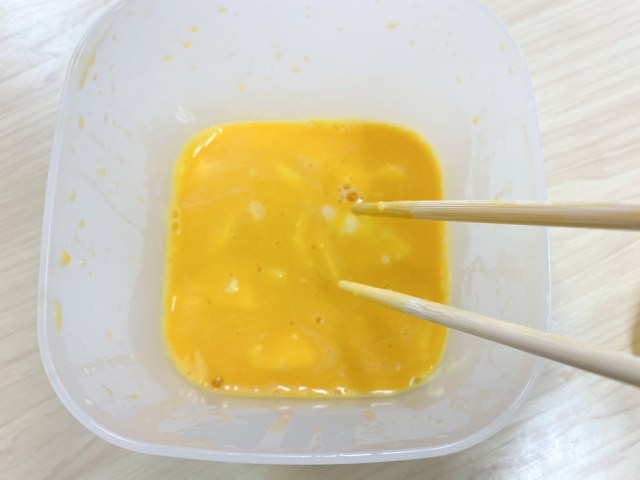
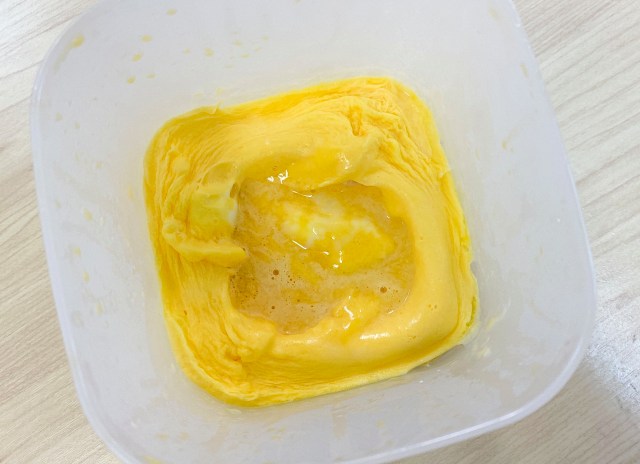
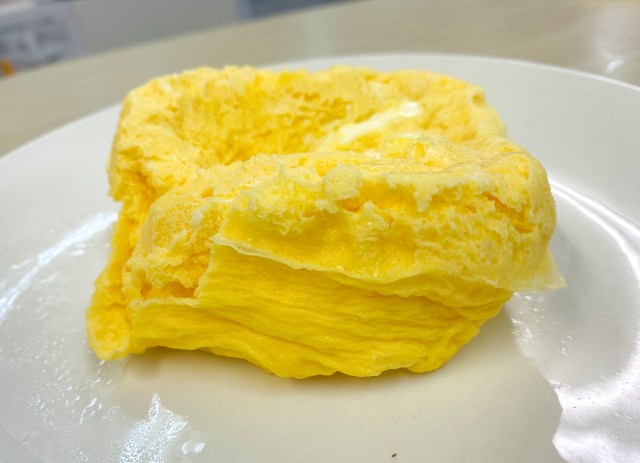
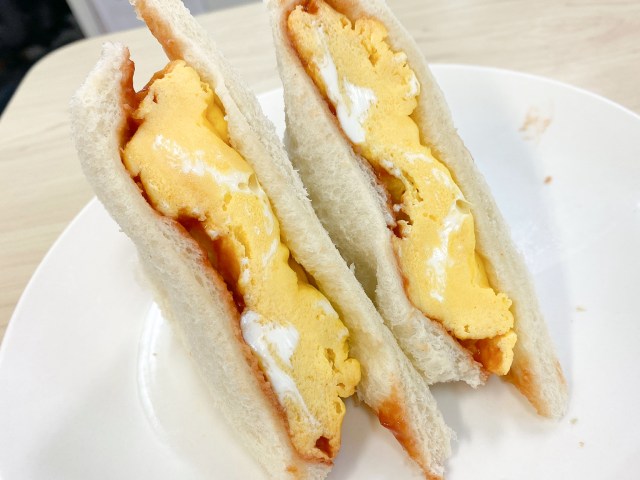
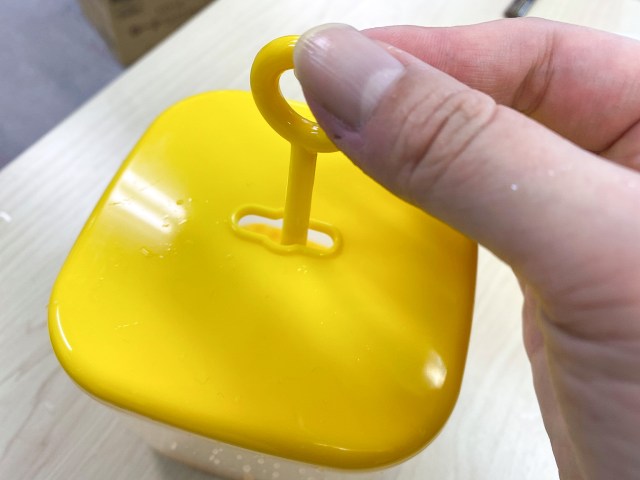
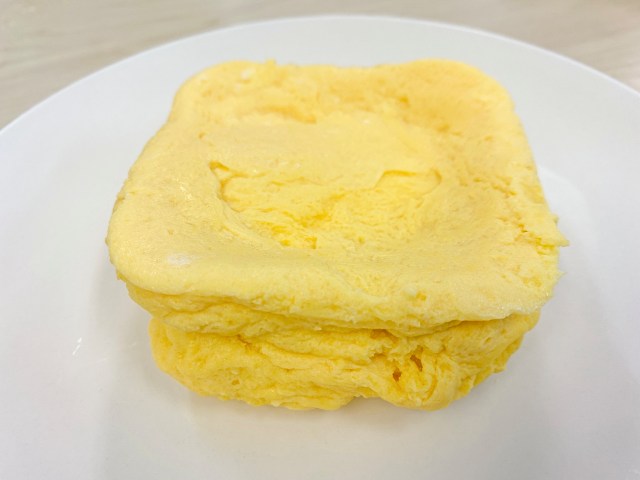
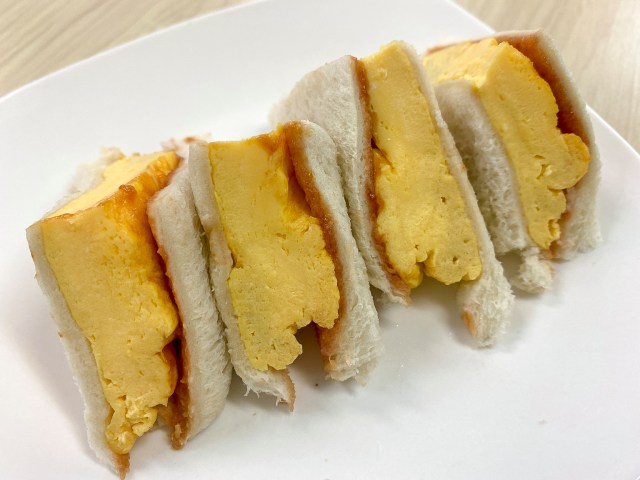
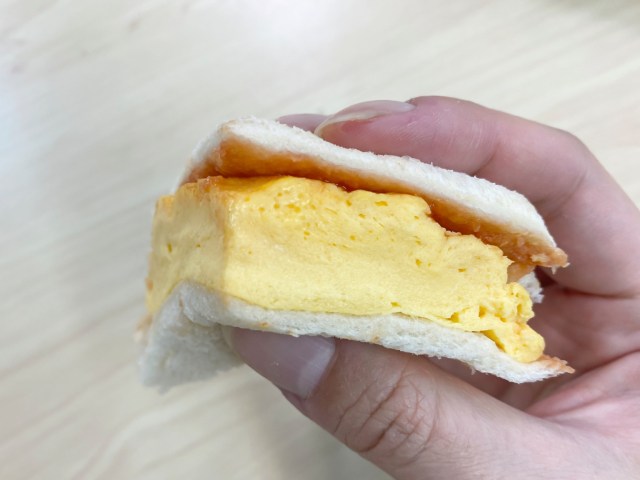
 New contraption from Japan lets you cook paper-thin egg omelets in your microwave
New contraption from Japan lets you cook paper-thin egg omelets in your microwave Daiso vs. Seria: Which sells the better egg white whipper? We find out【SoraKitchen】
Daiso vs. Seria: Which sells the better egg white whipper? We find out【SoraKitchen】 Salt Milk Bean Paste…Omelette? Japanese bakery adds a surprise to its cake section
Salt Milk Bean Paste…Omelette? Japanese bakery adds a surprise to its cake section Japan’s one-person sandwich press, a “God item” for solo diners, sells out online
Japan’s one-person sandwich press, a “God item” for solo diners, sells out online We try Dom Dom Burger’s new limited-time-only Spicy Cod Roe Thick Egg Omelet Burger
We try Dom Dom Burger’s new limited-time-only Spicy Cod Roe Thick Egg Omelet Burger How to order snacks on a Shinkansen bullet train in Japan
How to order snacks on a Shinkansen bullet train in Japan Hello, cosmetics! Clinique teams up with Hello Kitty this summer for first-time collaboration
Hello, cosmetics! Clinique teams up with Hello Kitty this summer for first-time collaboration Burger King Japan suddenly adds Dr. Pepper and Dr. Pepper floats to its menu nationwide
Burger King Japan suddenly adds Dr. Pepper and Dr. Pepper floats to its menu nationwide Demon Slayer: Kimetsu no Yaiba gets new roller coaster attractions and food at Universal Studios Japan
Demon Slayer: Kimetsu no Yaiba gets new roller coaster attractions and food at Universal Studios Japan New samurai glasses are Japan’s latest weird must-have souvenir
New samurai glasses are Japan’s latest weird must-have souvenir New Nintendo Lego kit is a beautiful piece of moving pixel art of Mario and Yoshi【Photos】
New Nintendo Lego kit is a beautiful piece of moving pixel art of Mario and Yoshi【Photos】 Nintendo history you can feel – Super NES, N64, and GameCube controllers become capsule toys
Nintendo history you can feel – Super NES, N64, and GameCube controllers become capsule toys Japan’s new difficult-to-drink-from beer glass protects your liver, but it’s a brutal experience
Japan’s new difficult-to-drink-from beer glass protects your liver, but it’s a brutal experience 10 things you should buy at 7-Eleven in Japan
10 things you should buy at 7-Eleven in Japan McDonald’s adds new watermelon frappe and fruity macaron to its menu in Japan
McDonald’s adds new watermelon frappe and fruity macaron to its menu in Japan “The most Delicious Cup Noodle in history” – Japan’s French Cup Noodle wins our heart【Taste test】
“The most Delicious Cup Noodle in history” – Japan’s French Cup Noodle wins our heart【Taste test】 Starbucks releases a cute Frappuccino and Unicorn Cake…but not in Japan
Starbucks releases a cute Frappuccino and Unicorn Cake…but not in Japan Kyoto Tower mascot termination reveals dark side behind cute Japanese characters
Kyoto Tower mascot termination reveals dark side behind cute Japanese characters McDonald’s Japan’s Soft Twist Tower: A phantom ice cream only sold at select branches
McDonald’s Japan’s Soft Twist Tower: A phantom ice cream only sold at select branches Yabai Ramen: What makes this Japanese ramen so dangerous?
Yabai Ramen: What makes this Japanese ramen so dangerous? Finally! Nintendo Japan expands Switch 8-bit controller sales to everybody, Online member or not
Finally! Nintendo Japan expands Switch 8-bit controller sales to everybody, Online member or not Japanese government wants to build luxury resorts in all national parks for foreign tourists
Japanese government wants to build luxury resorts in all national parks for foreign tourists To combat declining birth rate, Japan to begin offering “Breeding Visas” to foreigners
To combat declining birth rate, Japan to begin offering “Breeding Visas” to foreigners Studio Ghibli releases anime heroine cosplay dresses that are super comfy to wear
Studio Ghibli releases anime heroine cosplay dresses that are super comfy to wear Woman charged for driving suitcase without a license in Osaka
Woman charged for driving suitcase without a license in Osaka Studio Ghibli unveils My Neighbour Totoro miniature house model
Studio Ghibli unveils My Neighbour Totoro miniature house model Kyoto experiencing problems with foreign tourists not paying for bus fares, but not on purpose
Kyoto experiencing problems with foreign tourists not paying for bus fares, but not on purpose Fighting mild hunger with a Japanese soda that turns into jelly in the stomach【Taste test】
Fighting mild hunger with a Japanese soda that turns into jelly in the stomach【Taste test】 Studio Ghibli’s Howl’s Moving Castle tapestry unveiled in Japan for first time
Studio Ghibli’s Howl’s Moving Castle tapestry unveiled in Japan for first time McDonald’s new Happy Meals offer up cute and practical Sanrio lifestyle goods
McDonald’s new Happy Meals offer up cute and practical Sanrio lifestyle goods Sales of Japan’s most convenient train ticket/shopping payment cards suspended indefinitely
Sales of Japan’s most convenient train ticket/shopping payment cards suspended indefinitely Sold-out Studio Ghibli desktop humidifiers are back so Totoro can help you through the dry season
Sold-out Studio Ghibli desktop humidifiers are back so Totoro can help you through the dry season Japanese government to make first change to romanization spelling rules since the 1950s
Japanese government to make first change to romanization spelling rules since the 1950s Foreigner’s request for help in Tokyo makes us sad for the state of society
Foreigner’s request for help in Tokyo makes us sad for the state of society Ghibli founders Toshio Suzuki and Hayao Miyazaki contribute to Japanese whisky Totoro label design
Ghibli founders Toshio Suzuki and Hayao Miyazaki contribute to Japanese whisky Totoro label design Doraemon found buried at sea as scene from 1993 anime becomes real life【Photos】
Doraemon found buried at sea as scene from 1993 anime becomes real life【Photos】 Tokyo’s most famous Starbucks is closed
Tokyo’s most famous Starbucks is closed Princesses, fruits, and blacksmiths: Study reveals the 30 most unusual family names in Japan
Princesses, fruits, and blacksmiths: Study reveals the 30 most unusual family names in Japan Robot omelet chef is kinda neat, but won’t be taking over the world any time soon, netizens say
Robot omelet chef is kinda neat, but won’t be taking over the world any time soon, netizens say Japanese chef shows off amazing cooking skills with high-flying omelettes 【Video】
Japanese chef shows off amazing cooking skills with high-flying omelettes 【Video】 25 different Japanese convenience store sandwiches – What’s inside them?【Photos】
25 different Japanese convenience store sandwiches – What’s inside them?【Photos】 Rice cats feel the cold, need omelette blankets this winter【Pics & Video】
Rice cats feel the cold, need omelette blankets this winter【Pics & Video】 Is a camping toaster from Daiso any good? We tested one so you don’t have to!
Is a camping toaster from Daiso any good? We tested one so you don’t have to! McDonald’s and KFC Japan release new Tsukimi “moon-viewing” burgers for 2020
McDonald’s and KFC Japan release new Tsukimi “moon-viewing” burgers for 2020 Japanese convenience store Lawson unveils a new type of egg sandwich
Japanese convenience store Lawson unveils a new type of egg sandwich Put down the frying pan – You can make amazing pancakes with a sandwich maker, Japan learns【Pics】
Put down the frying pan – You can make amazing pancakes with a sandwich maker, Japan learns【Pics】 Starbucks’ retro Japanese kissaten menu debuts deliciously mature coffee gelatin cake【Taste test】
Starbucks’ retro Japanese kissaten menu debuts deliciously mature coffee gelatin cake【Taste test】 Mr. Sato falls for the biggest egg sandwich he’s ever seen…but what does it look like inside?
Mr. Sato falls for the biggest egg sandwich he’s ever seen…but what does it look like inside? Mr. Sato shows us what happens when you try to cook rice with only eggs 【SoraKitchen】
Mr. Sato shows us what happens when you try to cook rice with only eggs 【SoraKitchen】 Putting popcorn in your brownies is a great way to liven them up while skipping the nuts【Recipe】
Putting popcorn in your brownies is a great way to liven them up while skipping the nuts【Recipe】 Testing the true way to make fluffy pancakes from Japan’s Agricultural Cooperatives Group
Testing the true way to make fluffy pancakes from Japan’s Agricultural Cooperatives Group This French toast recipe that uses ice cream will knock your pajamas off【SoraKitchen】
This French toast recipe that uses ice cream will knock your pajamas off【SoraKitchen】 We try out a revolutionary product: long, looooong Japanese sandwich bread【Taste Test】
We try out a revolutionary product: long, looooong Japanese sandwich bread【Taste Test】
Leave a Reply